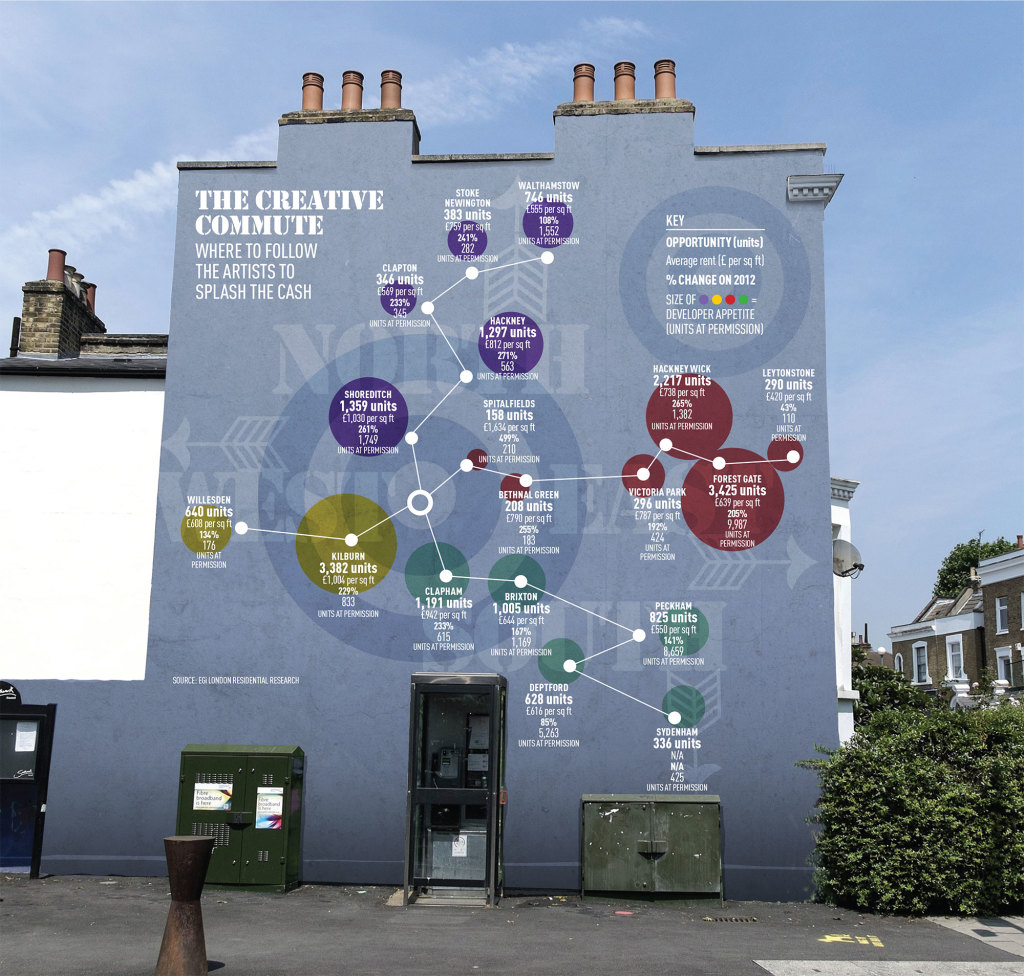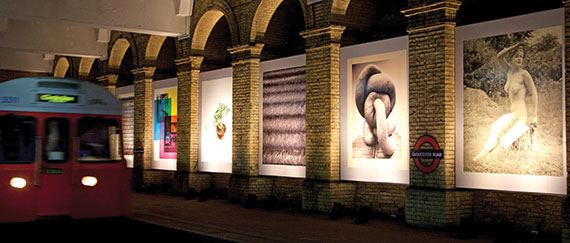As creative types continue to be priced out of central London, investors might do well to follow the migration – not least because it could lead to the next resi hotspots. Nadia Elghamry reports
Developers are missing out on more than 650 potential residential sites in some of the hottest up-and-coming areas in London.
These sites, in all four corners of the capital, have already been latched onto by artists priced out of conventional areas and could amount to nearly 19,000 homes, according to figures from EGi’s London Residential Research (see below).
Peckham, already red hot for creatives after artists were priced out of Clapham and then Brixton, has one of the highest levels of sites that have either stalled or where consent has lapsed, been withdrawn, or refused, presenting some of the biggest opportunities.
But developers have been slow to take up the baton, with just 284 units completed in 2015 in the area and 865 units at permission.
By comparison, neighbouring Deptford has more than six times as many units at permission.
“Figures show that developers are slow to take advantage of the new fashionable districts of London,” says Paul Wellman, senior researcher at LRR. “This is somewhat a surprise in view of the astonishing increase in capital values seen in recent times relative to other parts of the capital.”
For those developers willing to take the risk and dive into these grittier areas, the returns are high. The data shows that average £ per sq ft values in former hotbeds of artistic activity have more than trebled in the past 10 years and in some cases, such as Spitalfields, there has been a near tenfold increase.
But Wellman warns that the new “hip” districts come with their challenges. “Fashionable areas born out of the arts and creative sectors are often resistant to change and therefore getting schemes through planning can be more tiresome and costly,” he says. He points to Tower Hamlets, where developer British Land has faced heavy opposition to its development of 347,000 sq ft of offices and 40 homes from the Save Norton Folgate campaigners amid accusations of overdevelopment and gentrification ruining the area.
Perhaps wary of the experiences of heavyweights such as British Land, Adam Challis, JLL’s head of residential research, says: “Some of our clients explicitly follow trendsetters, while others prefer to wait until an area is established before buying.”
Developers have been following the arts community since this generation began to return to city living, says Challis, adding: “The term ‘new Shoreditch’ comes up a lot these days. Embodied in this trend is the desire to live in the cool, exciting places and from a developer’s standpoint, spotting the locations that reflect this demand can often mean buying into an area that outperforms in value over time.”
The figures
As artists tend to be among the first wave of people to target affordable, up-and-coming areas, you would do worse than follow their lead.
The circles opposite show the number of units that could be housed on sites where consent has lapsed, been withdrawn, or refused. By opportunity alone, the east of London wins for developers, driven by sites in Forest Gate.
The Zone 3 location could house 3,400 units on 33 sites. Rental values in the area have grown by more than 200% since 2002 but are only a third of Spitalfields, presenting lots of opportunity for further growth.
Developers are clearly eyeing the area, with nearly 10,000 units currently at permission. But canny operators might want to take a look at Leytonstone, which has some of the lowest average rents in our sample.













